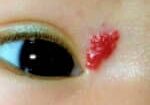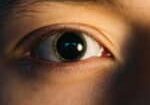What Is Miosis (Pupil Constriction)?

مرکز سیاه رنگ چشم را مردمک مي نامند و "میوز" اصطلاح پزشکی برای مردمک های کوچک و منقبض است. میوز چشم می تواند به دلایل بسیاری از جمله استفاده از مواد افیونی یا سکته مغزی
Miosis refers to the abnormal or excessive constriction (narrowing) of the pupil. The pupil is the black, central opening of the eye that regulates the amount of light entering the retina. In miosis, the pupil becomes smaller than normal, which can occur physiologically (as a normal response to light) or pathologically due to certain medical conditions, medications, or injuries.
Common Causes of Miosis
- Normal Response to Light
Pupils naturally constrict in bright light to protect the retina from excessive exposure. - Use of Certain Medications
Drugs such as opioids, pilocarpine (used in glaucoma treatment), or some antipsychotic medications can cause miosis. - Neurological Disorders
Conditions like Horner’s syndrome, brainstem stroke, or cranial nerve III palsy may present with miosis. - Eye Disorders
Uveitis (inflammation of the uveal tract) can lead to miosis as part of the inflammatory response. - Toxic Exposure
Exposure to certain chemicals or toxins, such as organophosphates (found in some pesticides), can cause marked pupil constriction.
Symptoms Associated With Miosis
Depending on the underlying cause, miosis may be accompanied by:
- Blurred or impaired vision, especially in low-light conditions
- Eye pain or discomfort
- Redness or inflammation of the eye
- Ptosis (drooping of the eyelid) if related to neurological causes
- Headache or facial sweating (in specific syndromes like Horner’s syndrome)
Diagnosis and Treatment
A detailed eye examination by an ophthalmologist or neurologist is essential. The diagnostic process may include:
- Pupil reactivity testing
- Slit-lamp examination
- Neurological assessment
- Imaging studies (MRI, CT scan) if neurological causes are suspected
Treatment depends on identifying and managing the underlying cause. For example:
- Discontinuing or adjusting medications
- Treating infections or inflammatory diseases
- Addressing neurological issues through appropriate medical intervention
Important:
Persistent or sudden-onset miosis without an obvious cause should always be evaluated by a healthcare professional, as it may signal a serious underlying condition.






